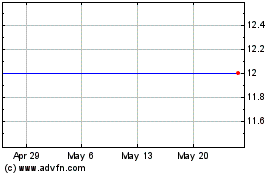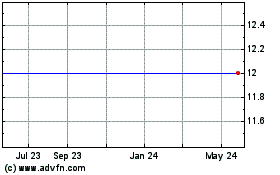New Data on Ceftaroline, a Novel, Broad-Spectrum Cephalosporin in
Development for Complicated Skin and Skin Structure Infections
(cSSSI) and Community Acquired Pneumonia (CAP) WASHINGTON, Oct. 27,
2008 /PRNewswire-FirstCall/ -- Forest Laboratories, Inc. (NYSE:FRX)
presented a detailed analysis of CANVAS I, a globally conducted,
multi-center, Phase III clinical trial, at the 48th Annual
Interscience Conference on Antimicrobial Agents and Chemotherapy /
Infectious Diseases Society of America 46th Annual Meeting (ICAAC /
IDSA) in Washington, DC. The results of this 702 patient study
demonstrated that ceftaroline monotherapy achieved its primary
endpoint of non-inferiority versus the combination of vancomycin
and aztreonam in the treatment of complicated skin and skin
structure infections (cSSSI).(1) (LOGO:
http://www.newscom.com/cgi-bin/prnh/20001011/FORESTLOGO ) Forest
also presented eighteen abstracts on data from preclinical studies
that demonstrate the activity of ceftaroline against
methicillin-resistant Staphylococcus aureus (MRSA), multi-drug
resistant Streptococcus pneumoniae (MDRSP) and many gram-negative
pathogens in both in vitro and in vivo models of infection. Results
of the CANVAS I study presented on Sunday show that
ceftaroline-treated patients had a clinical cure rate of 91.1%
compared to a vancomycin-plus-aztreonam clinical cure rate of 93.3%
at the test of cure (TOC) visit in the clinically evaluable
population (CE). In the modified-intent-to-treat (MITT) population,
ceftaroline-treated patients had a clinical cure rate of 86.6%
compared to a vancomycin-plus-aztreonam clinical cure rate of
85.6%. The study was designed to achieve a non-inferiority margin
of 10% for ceftaroline versus the comparator regimen for the above
endpoints. The most common infections included deep, extensive
cellulitis and major abscesses. The percent of patients with
diabetes and peripheral vascular disease in the ceftaroline arm was
17.7% and 13.4%, respectively.(1) 30% of patients with a confirmed
pathogen had a MRSA infection. The most common pathogens isolated
were S. aureus (MSSA and MRSA), Streptococcus pyogenes,
Streptococcus agalactiae, Enterococcus faecalis, E. coli and P.
aeruginosa. A comprehensive microbiological investigation was
completed and ceftaroline demonstrated activity against a broad
range of gram-positive pathogens and gram-negative pathogens.
Microbiological eradication rates for ceftaroline alone were
similar to those of the combination of vancomycin plus aztreonam
(91.8% vs. 92.5%). MRSA eradication rates were also similar in the
microbiologically evaluable patients in the ceftaroline and
combination arms (94.9% vs. 91.8%). "These new data add to the
growing scientific evidence that support ceftaroline as a potential
novel treatment for cSSSIs, including those caused by MRSA," said
G. Ralph Corey, MD, Director, Infectious Diseases, Duke Clinical
Research Institute. "These results are important because we see a
growing number of infections, including many with
difficult-to-treat organisms. Clearly new options are needed to
optimize our current treatment capabilities." The results of CANVAS
I also demonstrate that ceftaroline was well tolerated. The
majority of adverse events reported were mild and judged to be not
treatment related. The percentage of patients who experienced an
adverse event was similar in both treatment groups. The most common
adverse events observed in the ceftaroline vs.
vancomycin-plus-aztreonam arms were nausea (5.7% vs. 4.6%),
headache (5.1% vs. 3.7%) and pruritis (3.1% vs. 8.4%).(1) The data
presented from CANVAS I demonstrate that ceftaroline, as
monotherapy, is highly efficacious and well tolerated in treating
cSSSIs. Ceftaroline demonstrated efficacy in a variety of
monomicrobial and polymicrobial infections including those with
challenging pathogens and drug-resistant phenotypes. The full
results from this study demonstrate that ceftaroline's efficacy as
monotherapy is similar to combination therapy with vancomycin and
aztreonam. "We're very pleased with the data presented which
corroborate ceftaroline's potential use for the treatment of
complicated skin infections, including those caused by MRSA - a
common yet highly serious and growing problem faced by hospitalized
patients today," Marco Taglietti, Chief Medical Officer of the
Forest Research Institute, explained. "We are committed to
investing in highly effective therapies, such as ceftaroline, to
treat the growing number of multi-drug resistant infections. Along
with this commitment, it is our intent to build a novel and robust
antimicrobial franchise." Phase III Study Design CANVAS I, a
globally conducted, multi-center, Phase III, randomized,
double-blind comparative study was designed to evaluate the
efficacy and safety of ceftaroline as monotherapy compared to the
combination of vancomycin plus aztreonam.(1) The data were
collected from 702 adult patients with cSSSIs caused by
gram-positive and/or gram-negative bacteria.(1) Highlights of
additional data presented at ICAAC / IDSA include the following:
--Ceftaroline activity tested against organisms causing skin and
skin structure infections (SSSIs) isolated in USA and European
medical centers in 2008 (Poster C1-160)(2) --Antimicrobial activity
of ceftaroline tested against contemporary (2008) bacteria isolated
from community-acquired respiratory tract infections (CARTI),
including oxacillin- (methicillin-) resistant Staphylococcus aureus
(MRSA) (Poster C2-1974)(3) Dr. R. Jones and colleagues presented
two sets of surveillance data examining ceftaroline in vitro
activity against isolates from cSSSI and CAP. Ceftaroline was
highly active against over 1,500 gram-positive pathogens isolated
from cSSSI in the US and Europe, including methicillin-resistant
Staphylococcus aureus (MRSA) and fluoroquinolone-resistant
streptococci, thus, providing strong support for the use of this
agent in the treatment of complicated skin infections. Furthermore,
it was found to be highly active against more than 500
community-acquired respiratory tract clinical isolates, including
difficult-to-treat antibiotic-resistant strains.(2,3) --Activities
of ceftaroline, ceftobiprole, and cethromycin against
multi-drug-resistant (MDR) Streptococcus pneumoniae isolates from
Canadian Bacterial Surveillance Network (CBSN) (Poster C1-3843)(4)
Dr. D. Low and colleagues from the Canadian Bacterial Surveillance
Network report that three new antibiotics, cethromycin,
ceftaroline, and ceftobiprole, have greater in vitro activity
against MDRSP than ceftriaxone. Ceftaroline was eight-fold more
active than ceftriaxone and four-fold more active than ceftobiprole
against these resistant pathogens, supporting its use in
potentially life-threatening infections caused by these
bacteria.(4) --In vitro activity of ceftaroline (CPT) vs.
vancomycin (VM) against MRSA and hVISA strains in a
pharmacokinetic/pharmacodynamic (PK/PD) model (Poster A-979)(5)
--In vitro activity of ceftaroline against CA-MRSA, VISA, VRSA and
daptomycin-non-susceptible Staphylococcus aureus (DNSSA) (Poster
C1-162)(6) Dr. C. Vidaillac and colleagues used an in vitro model
system to compare the activity of ceftaroline with vancomycin.
Ceftaroline was more active against a S. aureus strain with
intermediate susceptibility to vancomycin and showed similar or
superior activity against MRSA, suggesting that it may provide a
new option for the treatment of antibiotic-resistant S. aureus.(5)
In support, Dr. L. Saravolatz and colleagues showed that
ceftaroline has the greatest overall in vitro bactericidal activity
against community-associated MRSA (CA-MRSA),
vancomycin-intermediate S. aureus (VISA), vancomycin-resistant S.
aureus (VRSA) and daptomycin non-susceptible S. aureus (DNSSA)
compared to vancomycin, daptomycin, clindamycin, linezolid,
TMP/SMX, and ceftriaxone.(6) --Spontaneous mutation frequency and
serial passage resistance development studies with ceftaroline
(CPT) (Poster C1-185)(7) Dr. R. Hinshaw and colleagues evaluated
the risk of ceftaroline resistance development using an in vitro
model. There was no propensity for resistance development to
ceftaroline when serially tested against important skin and
community-acquired pneumonia pathogens, including
methicillin-susceptible S. aureus (MSSA), MRSA, community-acquired
MRSA (CA-MRSA), vancomycin-intermediate S. aureus (VISA),
penicillin-susceptible S. pneumoniae (PSSP), penicillin-resistant
S. pneumoniae (PRSP), and beta-lactamase-negative H. influenzae.(7)
About Complicated Skin and Skin Structure Infections (cSSSIs)
cSSSIs are caused by gram-positive bacteria, such as MRSA, and
common gram-negative bacteria.(8) cSSSIs are among the most common
infections treated in the hospital setting,(9) and MRSA infections,
now the most frequent cause of cSSSI presenting to emergency
departments in the United States (U.S.) and the cause of more than
18,000 deaths in 2005, are becoming more common in patients in both
the hospital and community settings.(10) According to the Centers
for Disease Control and Prevention, about 70% of bacterial
infections are resistant to at least one drug.(11) Many are
resistant to multiple drugs making cSSSIs, especially due to MRSA,
challenging to treat.(12) cSSSIs can become extremely serious,
leading to hospitalization with increased risk for morbidity and
mortality and increased healthcare costs.(11) In a study of
patients in the emergency room with skin and skin-structure
infections, S. aureus was isolated from 76% of patients, and more
than half were MRSA.(13) About Ceftaroline Ceftaroline is a novel,
bactericidal, injectable, broad-spectrum cephalosporin being
developed as a therapeutic agent for the treatment of gram-positive
pathogens, including MRSA and multi-drug resistant Streptococcus
pneumoniae (MDRSP), as well as common gram-negative organisms.
Ceftaroline has also demonstrated bactericidal activity against
vancomycin-resistant Staphylococcus aureus (VRSA),
linezolid-resistant Staphylococcus aureus and penicillin-resistant
Streptococcus pneumoniae (PRSP). Ceftaroline is a member of the
cephalosporin class of antibiotics, the most frequently prescribed
class of antibiotics in the world. Ceftaroline is also being
studied in Phase III clinical trials for community-acquired
pneumonia. About Forest Laboratories Forest Laboratories (NYSE:FRX)
is a U.S.-based pharmaceutical company with a long track record of
building partnerships and developing and marketing products that
make a positive difference in people's lives. In addition to its
well-established franchises in therapeutic areas of the central
nervous and cardiovascular systems, Forest's current pipeline
includes product candidates in all stages of development and across
a wide range of therapeutic areas. The company is headquartered in
New York, NY. To learn more about Forest Laboratories, visit
http://www.frx.com/. Except for the historical information
contained herein, this release contains forward-looking statements
within the meaning of the Private Securities Litigation Reform Act
of 1995. These statements involve a number of risks and
uncertainties, including the difficulty of predicting FDA
approvals, the acceptance and demand for new pharmaceutical
products, the impact of competitive products and pricing, the
timely development and launch of new products, and the risk factors
listed from time to time in Forest Laboratories' Annual Report on
Form 10-K, Quarterly Report on Form 10-Q, and any subsequent SEC
filings. Source: Forest Laboratories, Inc. References 1. Corey R,
Wilcox M, Talbot GH, et al. CANVAS-1: Randomized, Double-blinded,
Phase 3 Study (P903-06) of the Efficacy and Safety of Ceftaroline
vs. Vancomycin plus Aztreonam in Complicated Skin and Skin
Structure Infections (cSSSI). To be presented at ICAAC / IDSA 2008.
2. Jones RN, Fritsche TR, Sader HS. Ceftaroline activity tested
against organisms causing skin and skin structure infections
(SSSIs) isolated in USA and European medical centers in 2008
(Poster C1-160). To be presented at ICAAC / IDSA 2008. 3. Sader HS,
Fritsche TR, Jones RN. Antimicrobial activity of ceftaroline tested
against contemporary (2008) bacteria isolated from
community-acquired respiratory tract infections (CARTI), including
oxacillin-resistant S. aureus (MRSA) (Poster C2-1974).To be
presented at ICAAC / IDSA 2008. 4. Patel SN, McGeer A, Green K,et
al. Activities of cethromycin (CETH), ceftaroline (CPT), and
ceftobiprole (BPR) against multi-drug resistant (MDR) Streptococcus
pneumoniae (SP) isolates from Canadian Bacterial Surveillance
Network (CBSN) (Poster C1-3843). To be presented at ICAAC / IDSA
2008. 5. Vidaillac C, Leonard SN, Rybak MJ. In vitro activity of
ceftaroline (CPT) vs. vancomycin (VM) against MRSA and hVISA
strains in a pharmacokinetic/pharmacodynamic (PK/PD) model (Poster
A-979). To be presented at ICAAC / IDSA 2008. 6. Saravolatz LD,
Pawlak J, Johnson L. In vitro activity of ceftaroline against
CA-MRSA, VISA, VRSA and daptomycin-non-susceptible Staphylococcus
aureus (DNSSA) (Poster C1-162). To be presented at ICAAC / IDSA
2008. 7. Hinshaw RR, Schaadt RD, Murray B, et al. Spontaneous
mutation frequency and serial passage resistance development
studies with ceftaroline (CPT) (Poster C1-185). To be presented at
ICAAC / IDSA 2008. 8. DiNubile MJ, Lipsky BA. Complicated
infections of skin and skin structures: when the infection is more
than skin deep. Journal of Antimicrobial Chemotherapy (2004) 53,
Suppl. S2, ii37-ii50. 9. Lee SY, Kuti JL, Nicolav DP. Antimicrobial
management of complicated skin and skin structure infections in the
era of emerging resistance. Surgical Infections. 2005, 6(3):
283-295. 10. Klevens RM, Morrison MA, et al. Invasive
Methicillin-Resistant Staphylococcus aureus Infections in the
United States. JAMA. 2007; 298(15): 1763-1771. 11. U.S. Food and
Drug Administration. Battle of the Bugs: Fighting Antibiotic
Resistance. Accessed on May 28, 2008. Available at:
http://www.fda.gov/fdac/special/testtubetopatient/antibiotics.html.
12. Scheinfeld N. Journal of Drugs in Dermatology. Jan 2007. A
comparison of available and investigational antibiotics for
complicated skin infections and treatment-resistant Staphylococcus
aureus and Enterococcus. 13. Moran, GJ. New England Journal of
Medicine. Aug 2006. Methicillin-Resistant S. aureus Infections
among Patients in the Emergency Department. 355:666-674.
http://www.newscom.com/cgi-bin/prnh/20001011/FORESTLOGODATASOURCE:
Forest Laboratories, Inc. CONTACT: Frank J. Murdolo, Vice President
- Investor Relations, Forest Laboratories, Inc., +1-212-224-6714,
Web Site: http://www.frx.com/
Copyright
Forest Road Acquisition (NYSE:FRX)
Historical Stock Chart
From Jun 2024 to Jul 2024

Forest Road Acquisition (NYSE:FRX)
Historical Stock Chart
From Jul 2023 to Jul 2024
